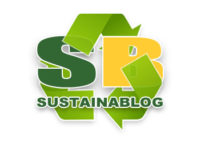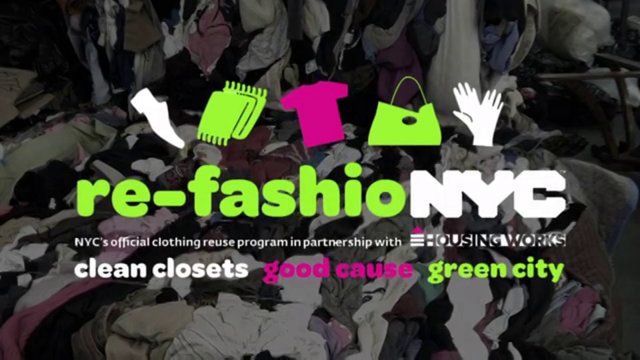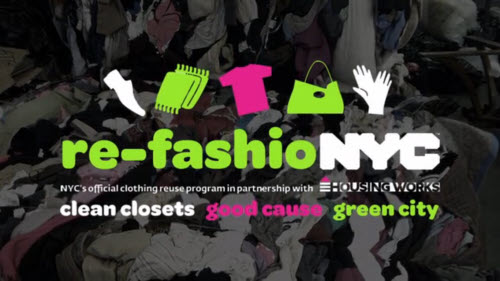New York City’s textile recycling program Re-FashioNYC, just turned three years old and reached its goal of diverting one million pounds of unwanted materials from landfills. These donations include clothing, shoes, accessories, towels, linens and rags. New Yorkers are catching on to what Europeans have known for years: everyone wins when we recycle textiles.
Beyond the environmental benefits of having less trash in landfills, recyclers are part of a booming industry with no signs of slowing down. The Council for Textile Recycling (CTR) estimates small-scale recyclers (those employing less than 500 employees) gross about $700 million in sales annually. In other words, it pays to go green! Let’s take a closer look at how a city and its residents prosper by recycling.
Three Ways Residents’ “Garbage” Help Others
We’re seeing textile recycling programs popping up in cities all over the country and for good reason. Communities are stronger when we recycle. Donations collected through Re-FashioNYC positively impact the city in the following ways:
- Charities Have More Money to Aid People in Need: Textiles in good shape are given to charities to be sold in thrift shops and other fundraising ventures. The earned money then can be used to fund organization’s missions to provide support to residents.
- Job Growth: Recycling provides jobs for minimally skilled, disabled and/or challenged individuals. Employees are in high demand to maintain and transport storage containers, sort and deliver donations, and more. Typically when people are working, they will spend more money; in turn, communities profit.
- More Revenue Stateside and Aboard: A portion of discarded items are exported overseas to low-income countries. Textile merchants and vendors sell them for pennies on the dollar to people earning minimal incomes. The World Wear Project estimates a vendor in Pakistan can sell a pair of pants for about 12 cents. Furthermore, fabric scraps and stained materials can be sold and repurposed into home insulation, carpet fibers, cushioning for upholstery and stuffed animals—just to name a few of the uses.
I know there’re lots more work to be done to reach the goal of zero textiles in landfills. But just as the idea of recycling aluminum, plastic and papers took time to develop, textile recycling containers soon will become commonplace in stores, apartment buildings and even street corners.
Does your city offer a program for you to recycle your unwanted items? If not, how do you like to reuse and/or repurpose your textiles? Tell me about it in the comments.
Image source: Screen capture from “re-fashioNYC: NYC’s Clothing Reuse Program [Extended]” video



Karen
Our Council admitted to us that it dumps textiles into landfill as there is no viable market. We disagree and requested free textiles to the community. After deliberation [red tape] free textiles are offered once a month. It’s still not enough but better than nothing. From RUDE [reusers of unloved discarded excess] on Facebook at Rude Record and on wordpress at http;//[email protected]
https://youtu.be/yhyb6W5KAi0